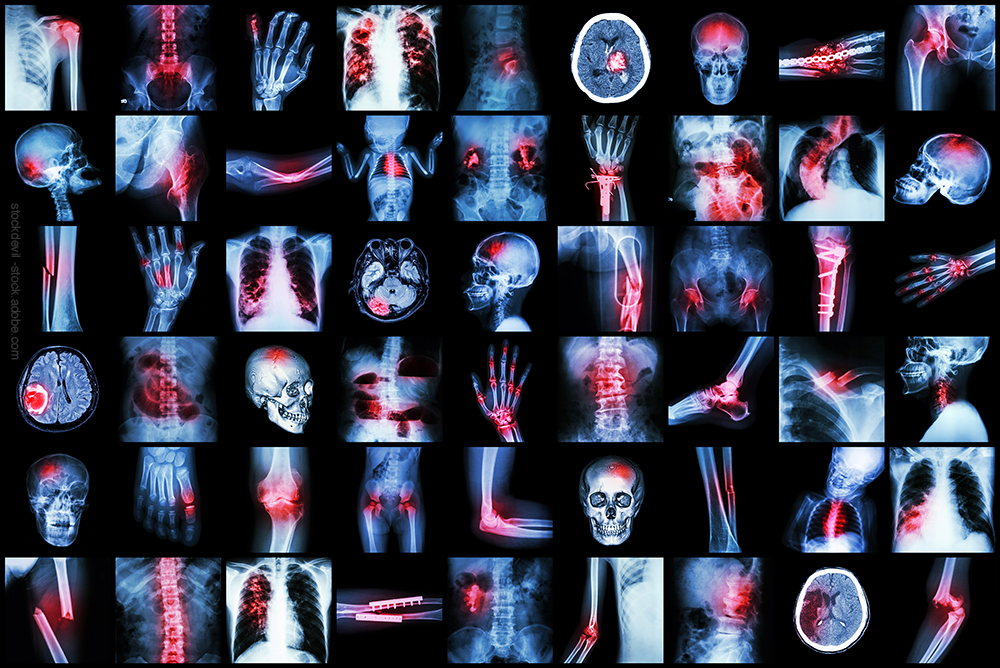Why Don’t Radiology Textbooks Have Imperfect Images?
There’s a big difference between perfect images in textbooks and the blurry ones you find in the real world. What then?

It took awhile, going through radiology residency, for me to realize: There was a severe disconnect between cases I saw in the reading-rooms and cases I was shown in conferences and textbooks.
The latter, “teaching” cases did a great job of showing important diagnostic details: patient positioning, phase of contrast, absence of artifact such as from respiratory motion, etc. were all pretty much as good as the viewer could possibly want.
Not so, in the reading-room. X-rays were obliqued to obscure anatomic landmarks and render measurements questionable. Ultrasound pics suffered from shadowing by bowel-gas, or patient inability to position, suspend respiration, etc. And let’s not even get started talking about all the ways CT, MR, NM can go awry.
I suppose part of what made it take longer to recognize this pervasive issue was the thought that, maybe, our techs in Facility X were just not skilled or effortful enough. Or the equipment was behind the times. But with the passage of years and accumulation of experience, I kept on seeing the same thing from other hospitals and imaging-centers.
It wasn’t a deficiency of these facilities providing clinical care. If anything, it was excessive quality on the part of the conference-presenting and article/textbook-writing crowd. They were presenting picture-perfect cases, while we radiologists trying to learn from them were functioning in a picture-imperfect environment.
Textbooks vs. the real world
This got hammered home to me once I was out in the “real world,” reading on my own without a wise mentor to provide answers (or to shoulder the burden of responsibility and anxiety when a specific diagnosis wasn’t readily apparent).
A typical scenario: I’d find a lesion, let’s say in the liver on a multiphasic contrast-enhanced CT or MR. The resolution wasn’t the best, there’s some motion artifact, and the contrast enhancement-pattern wasn’t a great match for anything I could recall seeing.
Related article: How to Manage Mistakes in Radiology
So, after boggling at the thing for awhile, I’d reach for a reference-websites, or textbooks in years gone by. And start clicking (or paging) around-of course wishing I’d find something that miraculously looked just like my case, but realistically just hoping (with mounting frustration) for something that had a passing resemblance to it. And, far too frequently, getting no help. Which thus meant I had little help to offer the referring clinician when saying something about the abnormality.
Looking at a presentation of such picture-perfect teaching cases, I most definitely appreciate having examples of what a given diagnostic entity looks like under ideal circumstances. But then, y’know what would really be helpful? Go on to show me half a dozen “real world” cases of the same diagnosis, warts and all: Some pertinent findings obscured in this instance, some atypical features in that one. Give non-academic types a fighting chance to look at your offerings and say, “Gosh, yeah, the lesion I’m looking at on my workstation sorta resembles that one from the article.”
Ideally, I could imagine some paragon of academic virtue doing a writeup-let’s stick with my example of troubleshooting diagnostically-challenging liver lesions. Showcasing a bunch of real-world examples (not handpicked perfect cases) from the author’s institution, including instances where the scans are barely of diagnostic value. Or run the article with an ongoing feature: For the next year, accept submissions of cases from the readers, and periodically run follow-up pieces taking them on.
The prevailing theme would be: No, we probably can’t make a conclusive determination in any of these. But notice features X, Y, and Z on the crummy images we have? Here are the diagnoses they favor-and here are the ones they effectively rule out.